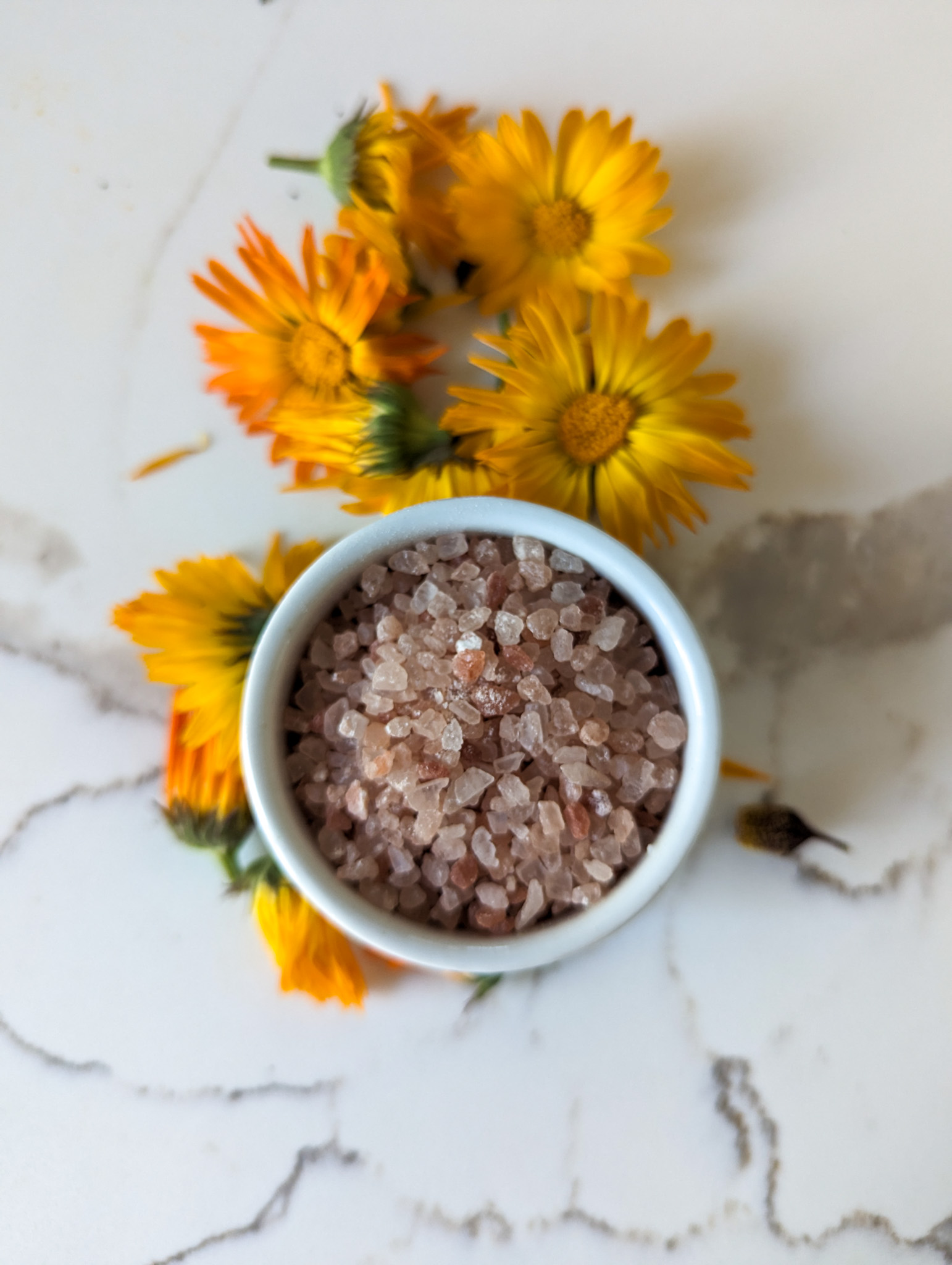Best Herbs for Nerve Pain: The Top Natural & Effective Remedies
These are the best herbs for nerve pain. Discovering effective relief for nerve pain is essential, especially when considering the impact it can have on one’s quality of life. Nerve pain, also known as neuropathic pain, stems from damage or dysfunction of the nervous system. This chronic condition often manifests as shooting, burning, or tingling sensations, making even the simplest tasks a challenge. Fortunately, amidst the search for viable solutions, herbal remedies offer a beacon of hope.
Chronic and often debilitating, it can hinder daily activities and diminish overall well-being. In the pursuit of effective pain management, exploring natural remedies becomes imperative. Herbal remedies, with their extensive history in traditional medicine, offer promising avenues for alleviating nerve pain with minimal side effects. Among the vast array of herbs, certain ones stand out for their potent analgesic and anti-inflammatory properties. In this post, I will describe herbs like nettle, oats, peppermint, cayenne, Jamaican dogwood, St. John’s Wort, and yucca, examining their potential as the best herbs for nerve pain relief.
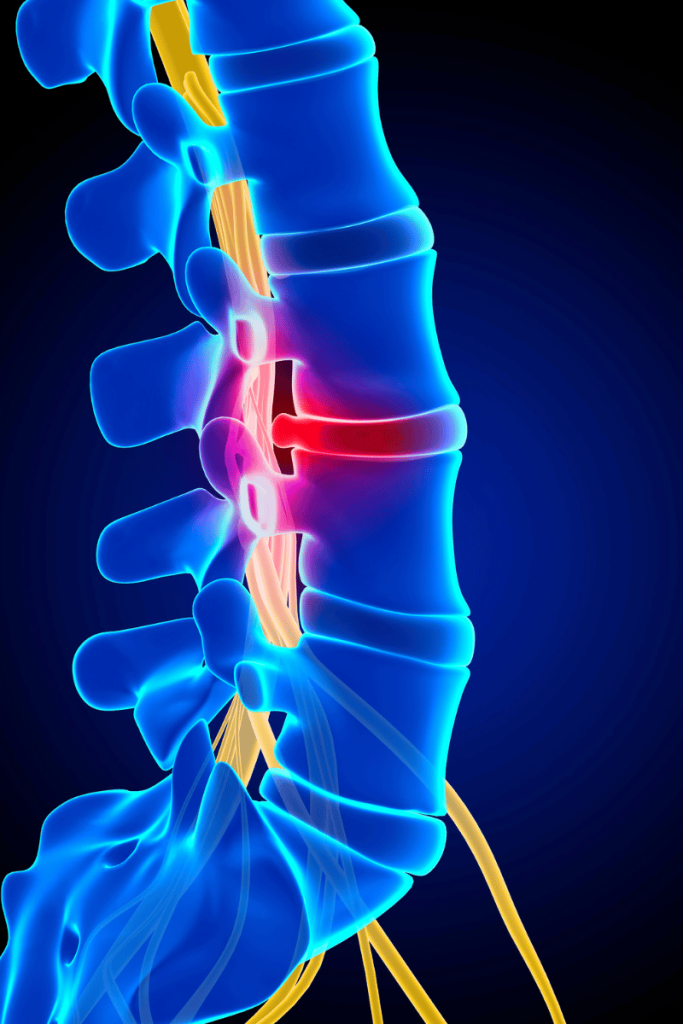
Understanding Nerve Pain
Nerve pain, medically termed neuropathic pain, is a complex and often debilitating condition that arises from abnormalities or damage affecting the nervous system. Unlike typical pain sensations, which arise from stimulation of pain receptors in the body, nerve pain stems from dysfunction within the nerves themselves. This can occur due to various factors, including injuries, diseases, infections, or conditions like diabetes or autoimmune disorders.
The hallmark of nerve pain is its chronic and often severe nature, characterized by sensations such as shooting, burning, tingling, or stabbing pain. These sensations can occur spontaneously or in response to stimuli that wouldn’t normally cause pain, such as light touch or temperature changes. Nerve pain can affect any part of the body, from the extremities to internal organs, and it can significantly impair mobility, sleep, and overall quality of life.
Save For Later!

There are several types of nerve pain, each with its distinct characteristics
Neuropathic Pain: This is a general term for nerve pain resulting from damage or dysfunction of the nervous system. It can manifest as shooting, burning, or tingling sensations and may be chronic.
Sciatic Nerve Pain: Sciatica is a specific type of nerve pain that occurs when the sciatic nerve, which runs from the lower back down the legs, becomes compressed or irritated. This can cause pain, numbness, or weakness in the lower back, buttocks, legs, or feet.
Diabetic Neuropathy: People with diabetes may experience nerve pain due to high blood sugar levels damaging the nerves. Diabetic neuropathy can lead to symptoms such as numbness, tingling, or pain, usually in the feet and hands.
Peripheral Neuropathy: This type of nerve pain affects the peripheral nerves, which are the nerves outside of the brain and spinal cord. Peripheral neuropathy can result from various causes, including injuries, infections, toxins, or metabolic disorders.
Understanding the different types of nerve pain is crucial for accurate diagnosis and effective treatment. By identifying the underlying cause and specific characteristics of the pain, healthcare providers can tailor treatment plans to address individual needs and improve outcomes for individuals living with nerve pain.
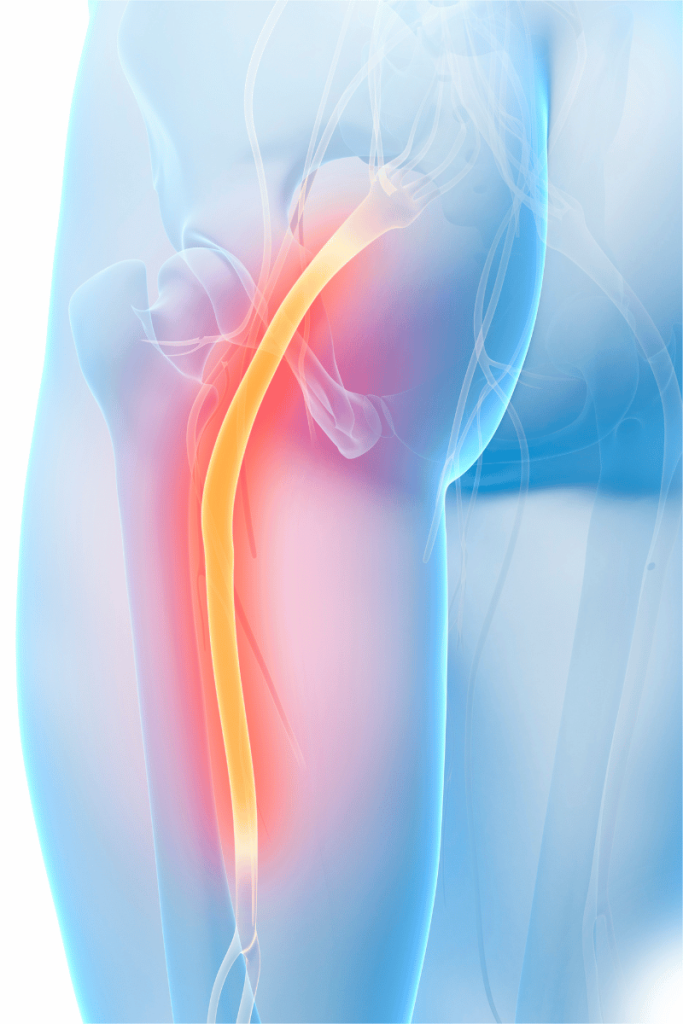
What Causes Nerve Pain?
Nerve pain can arise from a variety of factors, each contributing to the disruption of normal nerve function and the transmission of pain signals throughout the body. Here are some common causes of nerve pain:
Injuries: Traumatic injuries, such as those resulting from accidents or falls, can damage nerves directly, leading to pain and discomfort. Injuries that compress or pinch nerves, such as herniated discs or fractures, can also cause nerve pain.
Diseases and Conditions: Certain diseases and medical conditions can contribute to nerve pain. Diabetes, for example, can cause diabetic neuropathy, a type of nerve damage resulting from high blood sugar levels. Autoimmune diseases like multiple sclerosis or rheumatoid arthritis can also affect the nervous system and lead to neuropathic pain.
Infections: Infections caused by viruses or bacteria can damage nerves and result in nerve pain. Conditions such as shingles, Lyme disease, or HIV/AIDS can cause neuropathic pain as a result of nerve inflammation or damage caused by the infection.
Toxins and Chemicals: Exposure to toxins or chemicals, either through environmental factors or certain medications, can damage nerves and cause neuropathic pain. Chemotherapy drugs, for example, can cause peripheral neuropathy, a type of nerve damage that leads to pain, numbness, and tingling in the hands and feet.
Chronic Conditions: Chronic conditions such as fibromyalgia or chronic back pain can also lead to nerve pain. In these cases, the underlying condition may contribute to nerve sensitization or inflammation, leading to persistent pain and discomfort.
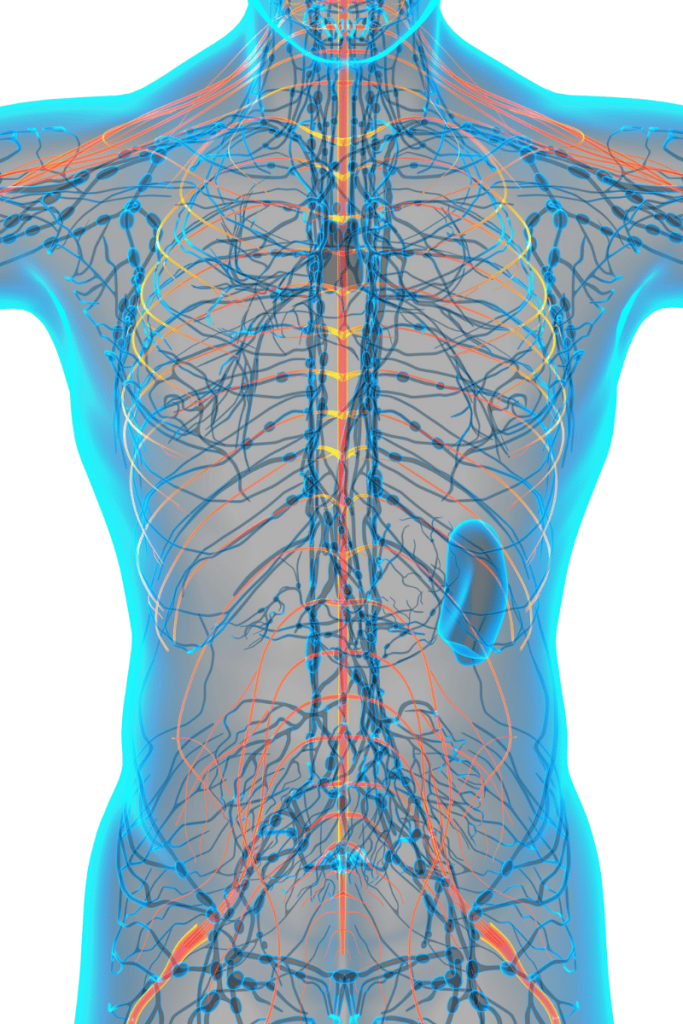
Importance of Addressing Nerve Function and Regeneration
Nerve function and regeneration play pivotal roles in the management and treatment of nerve pain, offering hope for long-term relief and improved quality of life. The intricate network of nerves throughout the body serves as the communication highway, transmitting vital signals between the brain and various body parts. When this system is compromised, whether through injury, disease, or other factors, it can result in debilitating nerve pain that significantly impacts daily functioning.
Addressing nerve function involves understanding and addressing the underlying causes of nerve pain, such as nerve damage, inflammation, or dysfunction. By targeting these root causes, healthcare providers can help restore normal nerve function, alleviating pain and discomfort. Additionally, promoting nerve regeneration is essential for repairing damaged nerves and restoring optimal function. This process involves the growth and repair of nerve cells, allowing for the restoration of communication pathways and alleviating pain symptoms.
Contributing Factors
Several factors contribute to nerve function and regeneration, making them essential components of comprehensive treatment plans for nerve pain. Adequate blood flow to the nerves is crucial for delivering oxygen and nutrients necessary for repair and regeneration. Additionally, reducing inflammation in the peripheral nervous system can help alleviate pain and promote healing. Lifestyle modifications, such as maintaining a healthy diet, engaging in regular physical activity, and managing stress, can also support nerve function and regeneration.
Best Herbs for Nerve Pain Overview
Herbs, such as nettle, oats, peppermint, cayenne, Jamaican dogwood, St. John’s Wort, and yucca, have shown promise in supporting nerve function and regeneration. These herbs contain active compounds with anti-inflammatory properties, antioxidant effects, and potential benefits for nerve health. Incorporating these herbs into a comprehensive treatment plan and other therapeutic modalities can help address nerve pain from multiple angles, leading to improved outcomes and quality of life for individuals living with nerve pain. By prioritizing nerve function and regeneration, healthcare providers and individuals alike can work towards long-lasting relief and optimal nerve health.
Overview of Herbal Remedies and Their Traditional Uses
Herbal remedies have been utilized for centuries across various cultures to alleviate pain and promote healing. These natural solutions harness the power of plant-based compounds to target underlying causes of nerve pain and provide relief. Traditional herbal medicine systems such as Ayurveda, Traditional Chinese Medicine, and Native American healing practices have long recognized the therapeutic potential of herbs in managing nerve-related conditions. The holistic approach of herbal medicine considers not only the symptoms but also the root causes of nerve pain, aiming to restore balance and harmony within the body.
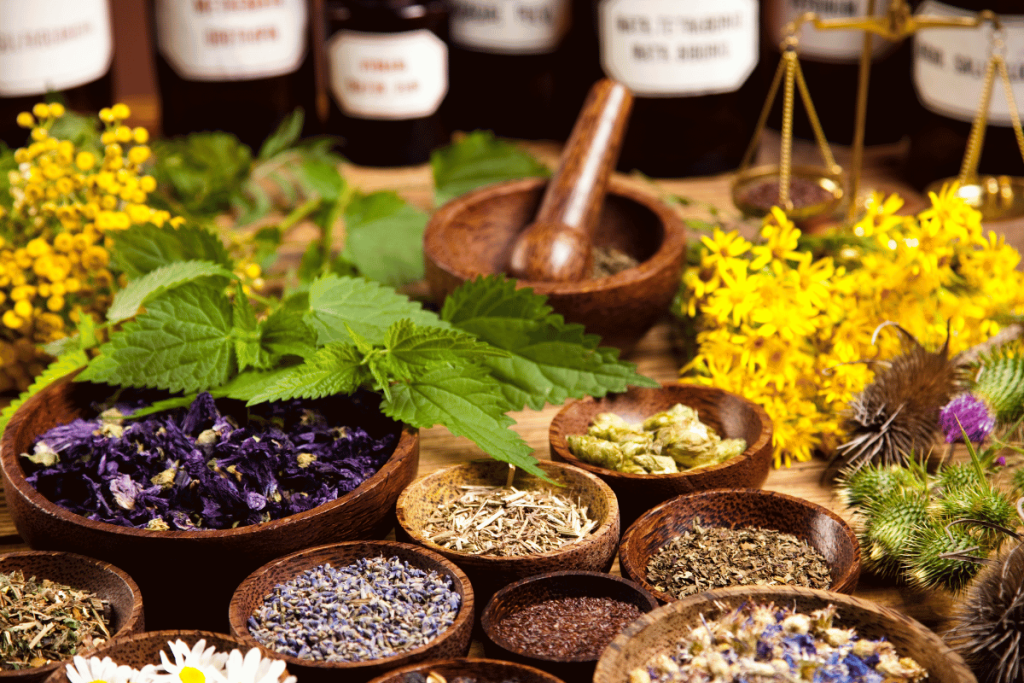
Highlighting Active Ingredients and Compounds with Potential Benefits
Herbs used for nerve pain relief contain a diverse array of active ingredients and compounds with potential therapeutic benefits. These include anti-inflammatory agents, analgesic compounds, antioxidants, and nerve-regenerating substances. For example, herbs like St. John’s Wort contain hypericin and hyperforin, which exhibit antidepressant and analgesic properties. Cayenne pepper contains capsaicin, a potent analgesic that works by desensitizing nerve receptors and reducing pain signals. Understanding the active ingredients within herbs allows for a targeted approach to pain management, maximizing the benefits of herbal remedies.
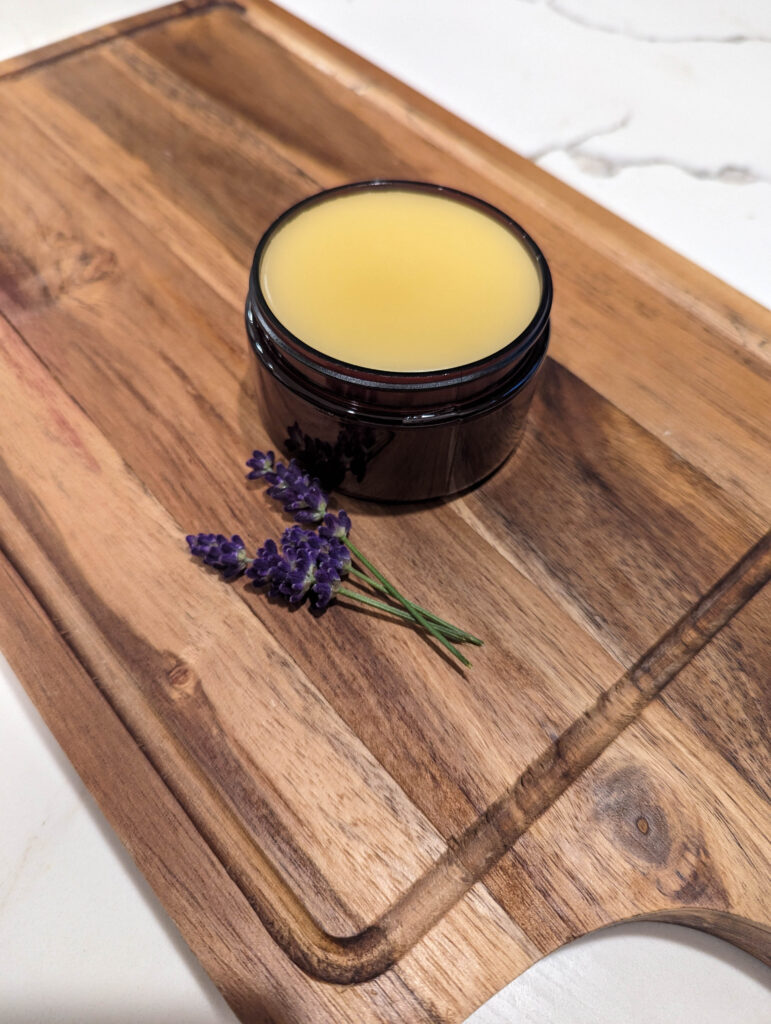
Introduction of Selected Herbs: Nettle, Oats, Peppermint, Cayenne, Jamaican Dogwood, St. John’s Wort, Yucca
Properties and Benefits of Each Herb in Relieving Nerve Pain:
- Nettle: Nettle contains anti-inflammatory compounds that can help reduce nerve inflammation and alleviate pain. It also possesses diuretic properties, which may aid in removing toxins from the body and promoting nerve health.
- Oats: Oats are rich in vitamins, minerals, and antioxidants that support nerve function and regeneration. They contain compounds like avenanthramides, which have anti-inflammatory effects and may help reduce nerve pain and discomfort.
- Peppermint: Peppermint contains menthol, which acts as a natural analgesic and provides a cooling sensation that can help soothe nerve pain. It also has antispasmodic properties, which may alleviate muscle spasms often associated with nerve pain.
- Cayenne: Cayenne pepper contains capsaicin, a powerful compound that blocks pain signals and reduces inflammation. Topical applications of cayenne can provide quick relief from nerve pain by numbing the area and increasing blood flow to the affected area.
- Jamaican Dogwood: Jamaican dogwood has been traditionally used as a nerve tonic and pain reliever. It contains compounds like flavonoids and alkaloids, which have sedative and analgesic properties that can help alleviate nerve pain and promote relaxation.
- St. John’s Wort: St. John’s Wort is well-known for its mood-enhancing properties, but it also possesses analgesic and anti-inflammatory effects that can benefit nerve pain sufferers. It contains hypericin and hyperforin, which may help reduce nerve-related discomfort and improve overall well-being.
- Yucca: Yucca contains saponins, which have anti-inflammatory properties that can help reduce nerve inflammation and pain. It also contains antioxidants that support nerve health and may aid in nerve regeneration.

Evidence from Traditional Usage and Modern Research Studies:
- Many of these herbs have a long history of traditional usage for nerve-related conditions, providing anecdotal evidence of their effectiveness. For example, Native American tribes used yucca root as a natural remedy for various ailments, including nerve pain.
- Modern research studies have begun to elucidate the mechanisms of action and therapeutic benefits of these herbs for nerve pain relief. Clinical trials and scientific studies have provided evidence supporting the efficacy of herbs like St. John’s Wort and cayenne pepper in alleviating nerve-related discomfort.
Potential Side Effects and Precautions:
- While herbal remedies can offer natural relief, it’s essential to be aware of potential side effects and precautions associated with their use. For example, St. John’s Wort may interact with certain medications, and cayenne pepper can cause skin irritation if applied topically in high concentrations.
- Individuals with pre-existing health conditions or those taking medications should consult with a healthcare professional before incorporating herbal remedies into their regimen. Additionally, pregnant or breastfeeding women should exercise caution and seek guidance from a healthcare provider before using herbal supplements.
Incorporating these selected herbs into a holistic approach to nerve pain management can provide natural relief and support nerve health and regeneration. However, it’s essential to approach herbal remedies with caution and seek guidance from a healthcare professional to ensure safety and efficacy.
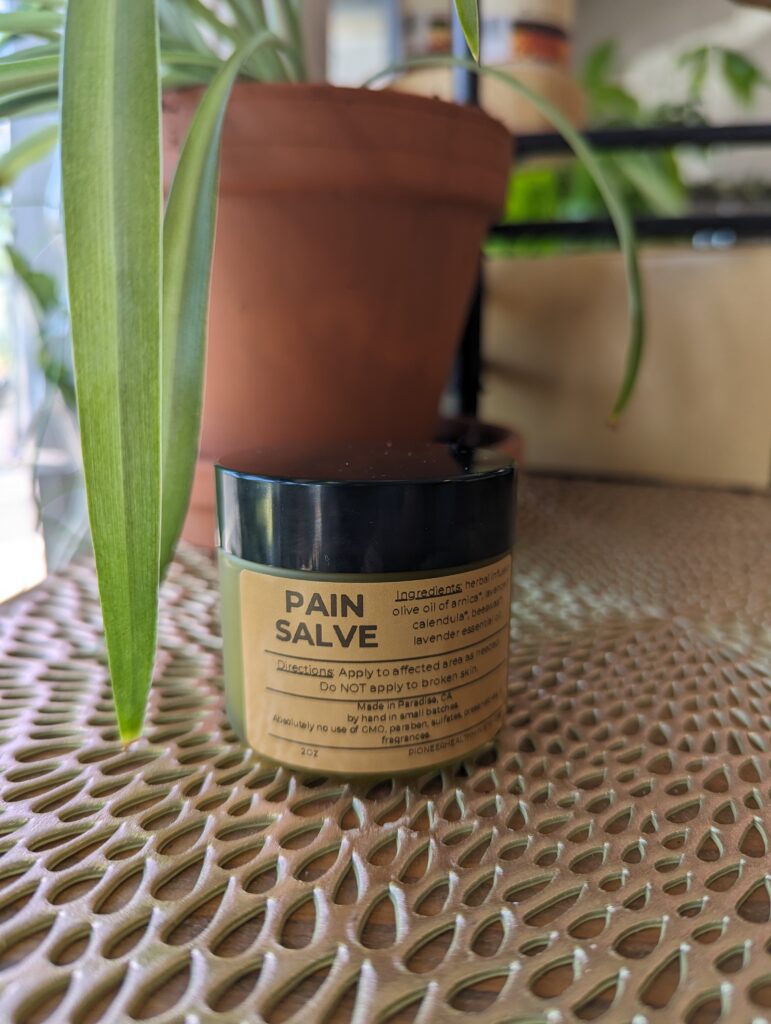
This is not meant to be medical advice. Speak with your healthcare provider before taking any herbs medicinally. Herbal medicine can have contraindications with medications or other diseases.
See my resources page for more sourcing of herbs and DIY items.
The Best Herbs for Nerve Pain
These herbs are superior for using for relieving nerve pain and for different reasons. Read each herb below and determine which best fits your particular ailment. Everyone is different and will have different needs and preferences when taking herbs. Read the best herbs for nerve pain below to help make the best decision for yourself. There is no one right answer as we all have a unique body and circumstances.
Nettle
Nettle (Urtica dioica) is a nourishing herb full of iron, calcium, magnesium, protein, and other nutrients. This is an excellent herb for anemia, low blood pressure (hypotension), and general weakness. Nettle leaf is anti-inflammatory and would work well to ease inflammation. Nettle is excellent at helping to process protein within the body as well as removing toxic protein wastes. It has been proven to improve bodily function including sluggish thyroid, kidney, nerves, muscles, or gastrointestinal. Nettle is particularly effective for pain relief from inflammatory causes. It supports and heals the nerves and surrounding tissues. Although there are few studies on this, it does have an affinity for the nerves and has been documented to help relieve sharp, shooting pains often attributed to nerve pain such as sciatica pain.
This herb can sometimes have a stimulating effect on some women.
Nettle is extremely safe except when trying to harvest a live plant without gloves. It is called “stinging” nettle after all. Make sure to wear gloves.
Add nettle leaf to any tea or decoction to add its many nutritional benefits.
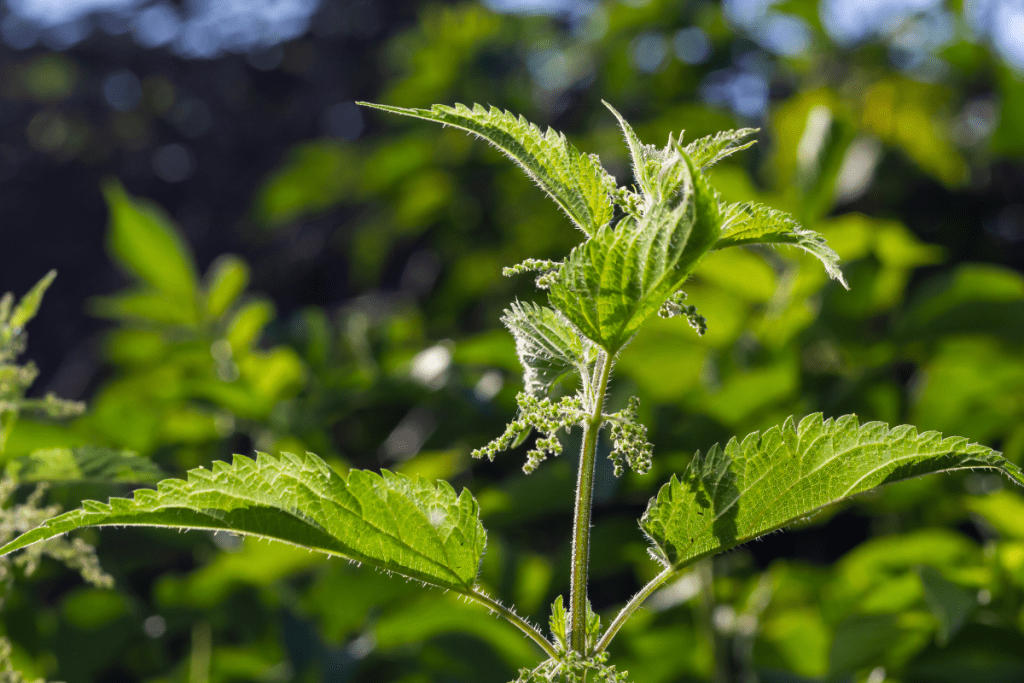
Oats (oatstraw)
Oatstraw (Avena sativa) is also called oatgrass. Oats are highly nutritive with minerals, carotene, folliculin-like hormone, flavones, glycosides, polysaccharides, alkaloids, proteins, flavonoids, saponins, fixed oil, starch, vitamins B, D, E, and P. It aids in strengthening tissues and nerves with its high silicon content. Oats are excellent for use to strengthen connective tissue, skin, mucous membranes, and nerve fibers. It is also packed with trace minerals and vitamins to help build up the body. Especially for those suffering from illness or overexertion.
It is contraindicated for those who have a gluten sensitivity.
Taken as an infusion of 1-2 teaspoons per cup of water. Tincture 1-2 dropper fulls (1 ml generally) taken 1-3 times a day.
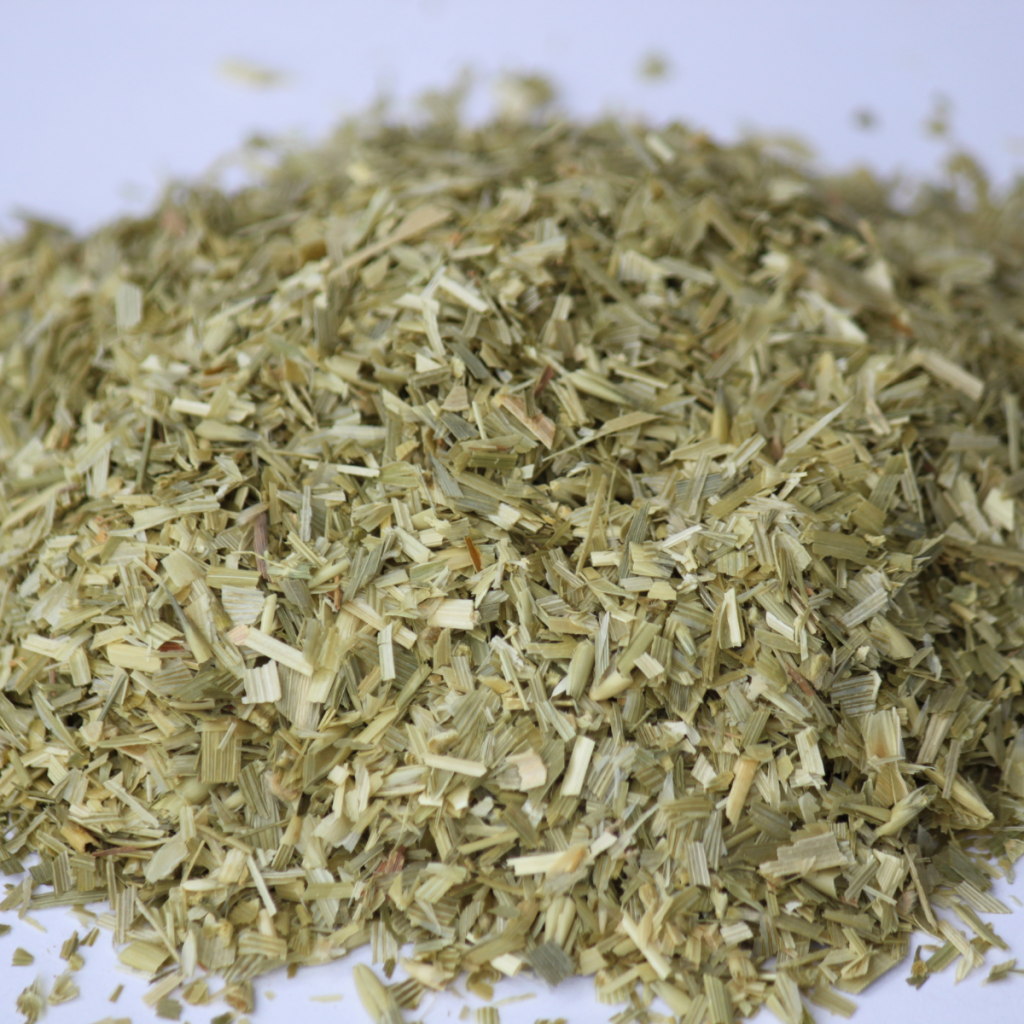
Peppermint
Peppermint (Mentha piperata) renews, refreshes, and energizes while also soothing effects on the nervous and gastrointestinal systems. Needless to say, peppermint is a versatile herb. It is widely used in products such as toothpaste, mouthwash, and chewing gum.
Peppermint is an antispasmodic and helps settle the stomach, reduce stomach cramping and spasms, and expel gas, anti-emetic, diaphoretic, and a mild palliative effect on colds, and fevers. Combined with lavender, it is useful for burns and headache relief.
The parts used are the leaf and flower.
Peppermint can increase heartburn and other gastrointestinal reflux symptoms. It should be used sparingly, if at all while breastfeeding.
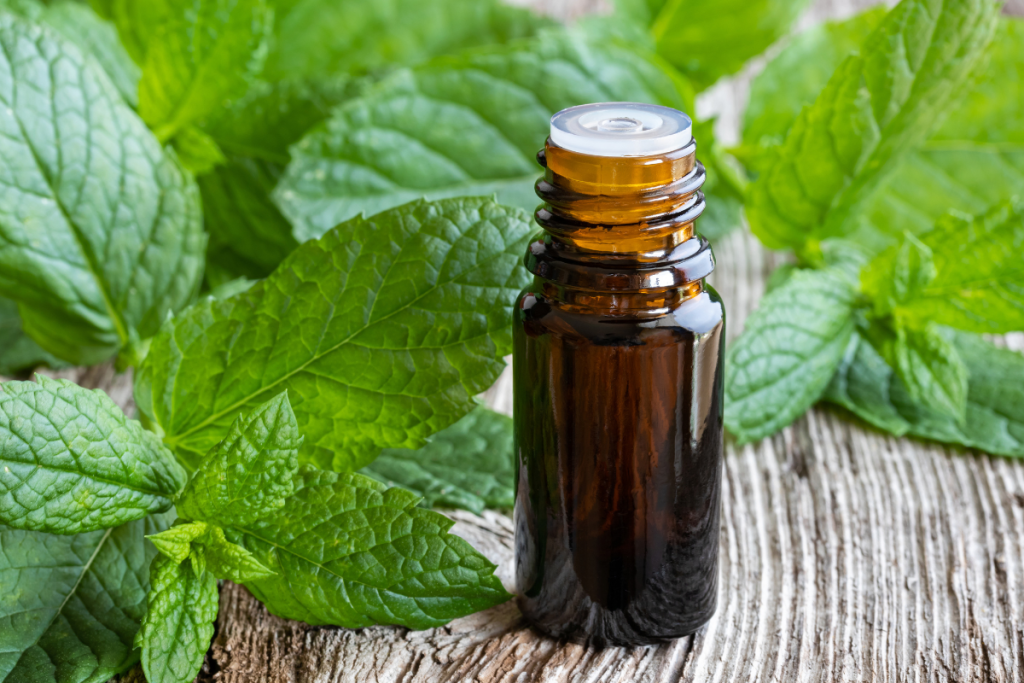
Cayenne
Cayenne (Capsicum annuum) is a warming circulatory stimulant, a safe and effective tonic for the heart, and a wonderful digestive aid. One of the main properties is capsaicin, it stimulates circulation throughout the body and aids in digestion by stimulating the release of both saliva and stomach enzymes while also blocking substance P (a neuropeptide that relays pain sensations). It also tells the brain to release endorphins. It has been used topically for pain relief for arthritis, bursitis, and muscle and joint pain. The spicy cayenne pepper is excellent for improving circulation and relieving pain, especially for neuropathy.
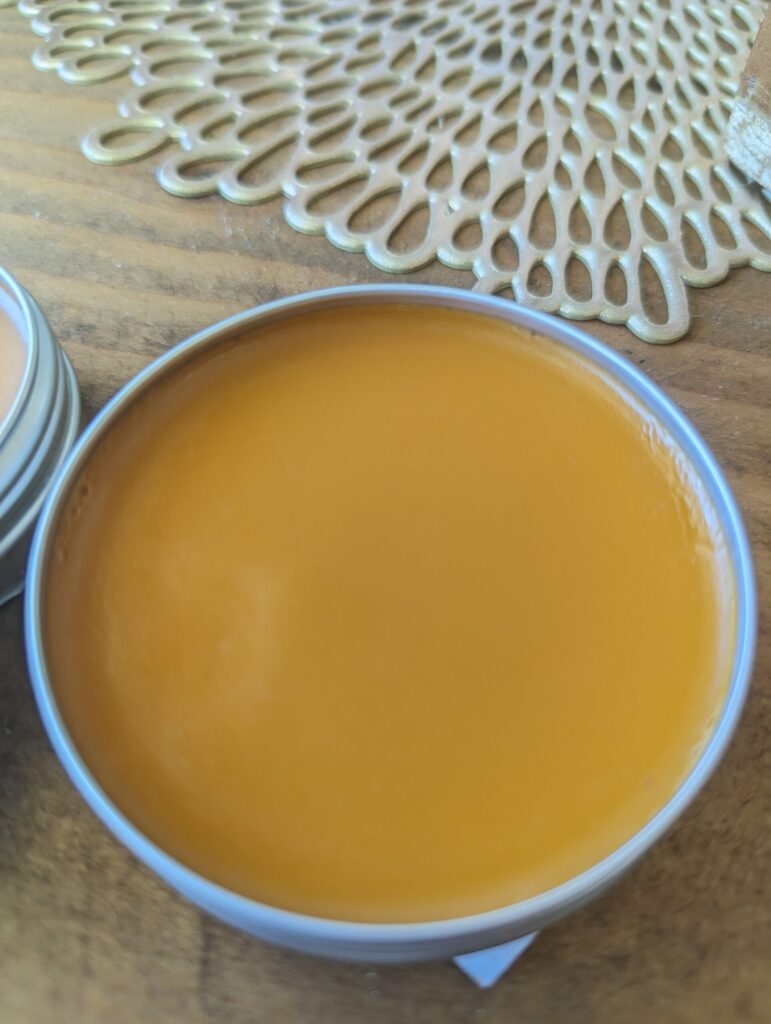
Cayenne is also high in vitamins A and C which allows it to help the immune system.
Only the fruit of the plant is edible and medicinal. This is part of the nightshade family.
The only warning for this herb is that it is hot! It is recommended to wear gloves when cutting as the oils can irritate the skin and you can inadvertently get the oils in your eyes with touch even after washing your hands. Too much of this herb can cause stomach convulsions. A little bit of this herb goes a long way.

Jamaican Dogwood
Jamaican dogwood (Piscidia piscipula) is a strong sedative that is also extremely helpful with nerve pain. This herb contains isoflavones, organic acids, beta-sitosterol, and tannins. It affects your central nervous system (CNS) and your lungs. Jamaican dogwood has an affinity for the CNS and aids in most ailments that affect it such as migraines, sciatica, mental stress, inflammatory conditions, and neuralgia.
It is not recommended for those suffering from depression or elderly people who have decreased physical movement. If taken in high doses it can become toxic. Symptoms of toxicity are nausea and headache. This is not meant to be used long term, only for acute situations and sparingly. It is best to be used in a formula and not on its own.
Taken as a decoction 1 teaspoon of herb per cup of water. Tincture as 1 dropperful (1 ml generally) as needed, not to exceed 4 times a day.

St. John’s Wort
St. John’s Wort (Hypericum perforatum) is a healer of wounds and nerve pain. This herb soothes nerves and helps with nerve pain such as sciatica, radiating spinal pain, neuralgia, and rheumatic pains. In recent studies, it’s been shown helpful with neuralgia resulting from chemotherapy. This herb can be helpful to every area where nerves are found including the gastrointestinal tract, eyes, toes, teeth, and spine. It can be given to support proper nerve function and strengthen weak areas.
This herb is contraindicated for those taking an MAOI (monoamine oxidase inhibitor) antidepressant. There have been reports of it interfering with this type of medication. Make sure to consult with your healthcare professional before taking it. Also, some birth control pills contain estrogen, and because St. John’s Wort may increase the breakdown of estrogen, it may decrease the effectiveness of the pills. It also increases your photosensitivity.
As an infusion take 1-2 teaspoons herb per cup of water. As a tincture 1 dropperful (generally 1 ml) 3 times per day. Can be used as an herbal oil being applied 1-3 times per day.

Yucca
Yucca (Yucca glauca) is a blood purifier with anti-inflammatory and detergent properties. It has antioxidants and antifungal properties as well. It can be a helpful analgesic for arthritis, neuralgia, and other inflammatory conditions.
Excessive consumption of this herb can lead to diarrhea, nausea, upset stomach, and vomiting. Only use under professional care if pregnant.
Take as a tincture of 1-3 ml 3 times daily. Standard decoction 2-4 ounces 3 times a day. Capsules of 500-1000 mg 3 times a day.

Get Started with the Best Herbs for Nerve Pain
Navigating the challenges of nerve pain can be a daunting journey, but the world of herbal remedies offers a beacon of hope for those seeking natural relief. The selected herbs, including nettle, oats, peppermint, cayenne, Jamaican dogwood, St. John’s Wort, and yucca, have demonstrated their potential as effective allies in the fight against nerve pain. With their rich history in traditional medicine and growing body of scientific evidence supporting their therapeutic benefits, these herbs offer a holistic approach to nerve pain management.
By understanding the active ingredients and compounds within these herbs, individuals can tailor their approach to nerve pain relief, maximizing the benefits of herbal remedies. However, it’s essential to approach herbal remedies with caution and seek guidance from healthcare professionals, especially for those with pre-existing health conditions or those taking medications.
Incorporating these herbs into a comprehensive treatment plan and other therapeutic modalities can provide natural relief and support nerve health and regeneration. By prioritizing nerve function and regeneration, individuals can take proactive steps toward long-lasting relief and improved quality of life.
The best herbs for nerve pain relief offer a promising avenue for those seeking natural alternatives to conventional medications. With their potent analgesic and anti-inflammatory properties, these herbs provide a holistic approach to nerve pain management, addressing both the symptoms and underlying causes of nerve pain. By embracing herbal remedies and working with healthcare professionals, individuals can take control of their nerve pain and reclaim their quality of life.

Let Me Know!
Let me know in the comments below what pain you’re having, what has or hasn’t worked for you already, and any other questions I can help you with.






